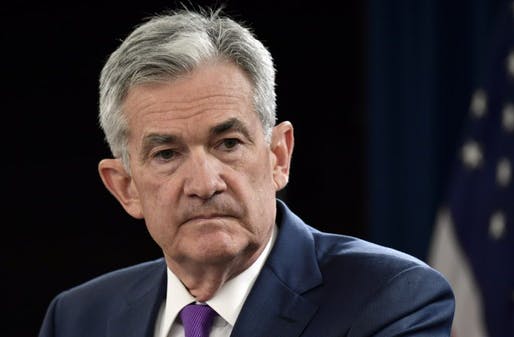| It’s not hard to find reasons to fret about the state of the economy. The housing market is slowing down. Light | Investor angst is up, even as the economy keeps rising One "vulnerability" the Fed identified that got attention was excessive debt by businesses and consumers. DECEMBER 1, 2018 — 2:34PM |
News from the bond market seems worrisome, too, as investors have demanded a higher premium of late to buy a corporate bond that carries some risk rather than buy a Treasury note instead.
Then there are the dire headlines about ballooning big-company debt. A “$9 trillion corporate debt bomb is bubbling,” according to CNBC, making it a “time to worry,” as the New York Times put it.
Actually, it might be time to calm down.
The average economic up cycle since the end of World War II lasted only about five years, and this economic expansion has been chugging along now since summer 2009. It’s certainly looking likely that an economy that has recently grown at a rate of around 3.5 percent will slow down next year.
And while popping asset bubbles and reworking the debt of overleveraged companies and households can be painful, there’s not much reason to think those are the kind of economic troubles we are likely in for.
Some concern in the market last week followed the Federal Reserve’s first-ever financial-stability report, released along with a speech from Fed Chairman Jerome Powell. One “vulnerability” the Fed identified was excessive debt by businesses and consumers.
Yet Powell, in his talk in New York, sure didn’t sound alarmed. You would expect a lot of debt this late in an economic expansion, he said, and total debt hasn’t reached the peak levels seen in the late 1980s and late 1990s. He likened the Fed’s new report to an annual medical checkup for baby boomers like him, with his doctor saying he needs to pay attention to some things but overall he’s a healthy guy.
Some of the angst over debt seems to center around all the money borrowed by just one company, AT&T. Just a summary of its debt runs to more than three pages of tiny type with a whopping total of more than $183 billion at the bottom.
Apologies if this sounds unsophisticated, but a big debt load is only a problem if the borrower doesn’t have the money coming in to make the payments. In just the last quarter, AT&T had nearly $16 billion of cash earnings.
It’s a similar story for some Minnesota companies that seem to have taken on a lot of debt, like Golden Valley-based General Mills. It needed to finance acquisitions, and so it had about $15.6 billion in debt as of the end of its last quarter, which was 2½ times as much as it had in shareholder equity.
Depending on who is making the call, that much debt relative to equity likely means General Mills fits the definition of a highly leveraged company. But to add a little perspective, its cash earnings in its last full year came to about $3.3 billion.
Bankers use a shorthand to talk about corporate indebtedness, a simple calculation of total debt divided by the cash earnings, usually defined as earnings before interest, taxes, depreciation and amortization. It’s the money left over after cash expenses that should be available to pay back any loans.
In the case of General Mills, that ratio is about 4.8. That’s not exactly a low number as such things go, and would be worrisome for a company in a highly cyclical business with unpredictable cash flow. In a recession, however, no one seems to stop eating Cheerios. In the worst year of the Great Recession of the last decade, General Mills managed to increase its operating profits.
Other big Minnesota companies that carry debt are even less leveraged than General Mills. Hormel Foods has made acquisitions in the recent past, but its outstanding debt makes up just a sliver of its total capital.
Target Corp. and Ecolab each have about half of their total capital made up of debt, but for both the total debt to annual cash earnings ratio shows they easily have the income to handle what they owe. Even frugal consumer households can be more heavily indebted than these companies are.
“Odd” is the word Bryce Doty used for what he’s seeing in the markets lately, including hand-wringing over excessive debt. A senior vice president and fixed income portfolio manager for Minneapolis-based Sit Investment Associates, Doty has seen signs of strong economic performance he thought he would never live to see, like having more job openings than workers to fill them.
“The signs for the economy are green, green, green,” he said. “Just so many different record things happening.”
Yet in the markets he pays attention to, he said, “It’s red, red, red.”
The housing market slowdown? That’s true, he said, but housing prices had been appreciating more than 5 percent a year, and the recent slowdown in price increases just means that the market is healthy but maybe not booming.
Corporate bonds have declined in relative value compared with Treasury bonds, too, and that’s usually a bad sign for the credit markets. Yet Doty said he doesn’t expect an increase in companies defaulting on what they owe.
"The bond market is giving all the same signals as though we’re going into a downturn in the credit cycle. It looks identical to that,” he said. “But it’s a false signal.”
Doty said he’s often skeptical of economic news that’s based on a survey, like for consumer confidence. Survey results are subjective, and if consumers feel slightly less great in November than they did in October that leads to a bad news headline.
But never mind the reported numbers, consumers are buying, as in 2018 consumers have been about as confident as they have been in 18 years. If in next month’s survey most consumers have suddenly turned gloomy, well, that would be news.
“My predictions are good for 10 minutes, you know,” Doty added. “Better get that article out.”
Lee Schafer joined the Star Tribune as columnist in 2012 after 15 years in business, including leading his own consulting practice and serving on corporate boards of directors. He's twice been named the best in business columnist by the Society of American Business Editors and Writers, most recently for his work in 2017.




 RSS Feed
RSS Feed